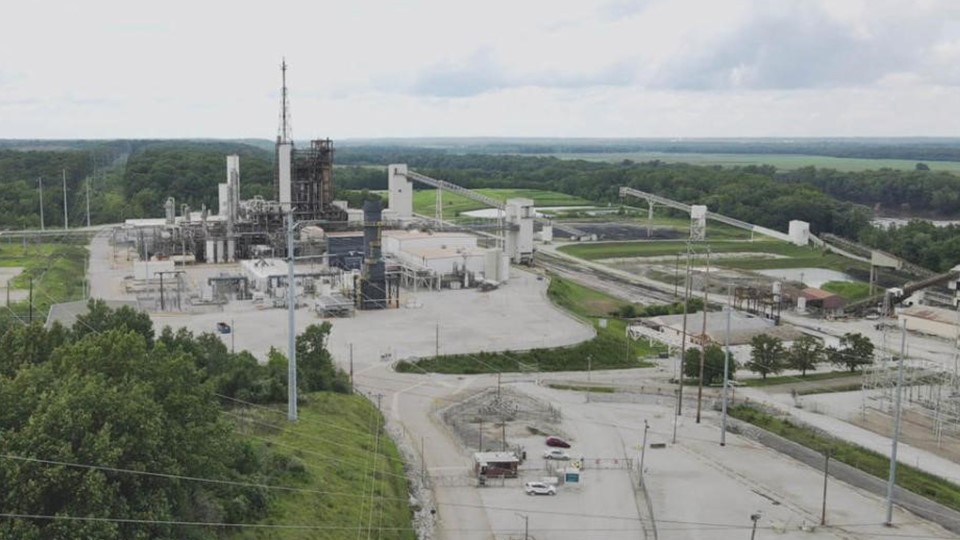Subscriber Benefit
As a subscriber you can listen to articles at work, in the car, or while you work out. Subscribe NowA proposed carbon-sequestration project in west central Indiana has cleared a key regulatory hurdle.
The U.S. Environmental Protection Agency on Wednesday issued two permits allowing Wabash Valley Resources LLC to begin construction on two wells in Vermillion and Vigo counties that will be used for the underground storage of carbon dioxide.
The carbon being stored in the wells would come from a former Duke Energy plant in West Terre Haute that is currently being retrofitted for the production of anhydrous ammonia fertilizer.
Greg Zoeller, vice president of external affairs for Wabash Valley Resources, said the approval by the EPA is validation of about five years of work to get to this point.
“I don’t get involved in a lot of projects, but this is one that I think could really be one of the best for Indiana in terms of our future economy, as a manufacturing state,” Zoeller said. “It also has the benefit of being good for Indiana agriculture. Those are the two main drivers for Indiana, in terms of our economy, and it’s also a good thing for the environment.”
In a statement released Wednesday, the EPA said it determined after a lengthy review and public engagement process that the planned wells meet all requirements for initial approval, including stringent safety measures.
“Today’s action will help reduce industrial carbon dioxide emissions that contribute to climate change while protecting nearby communities and essential groundwater resources in Vermillion and Vigo counties,” EPA Region 5 Administrator Debra Shore said in written remarks. “We look forward to continued engagement with these communities as construction proceeds.”
But the regulatory approval process is not finished. Once the wells are constructed, Wabash Valley Resources will need to seek additional approval from the EPA to begin injecting carbon dioxide into the wells.
The company expects about 1.67 million metric tons of CO2 could be injected into the wells each year over a 12-year period.
“The well sites were selected following extensive research to ensure the carbon dioxide can be safely stored in the rock formations about 5,000 feet below the ground,” the EPA said. “Studies of the site show that there is about 2,100 feet of solid rock…between the deepest source of drinking water in the area and the proposed carbon dioxide reservoir below, creating an effective and impermeable confining zone.”
The EPA said that the company will be responsible for monitoring the wells for a total of 22 years to ensure they are working properly, the CO2 doesn’t move from its injected location, and drinking water sources are protected.
A spokesperson for the company told IIB full site construction will begin later this year.
Wabash Valley Resources is investing some $900 million in the effort to retrofit the former Duke plant, which is currently being used to product hydrogen syngas.
When the project is complete in 2026, the company expects to produce about 500,000 metric tons of anhydrous ammonia fertilizer each year, supporting farmers in the Eastern Corn Belt, which covers most of central Indiana and western Ohio, and part of southern Michigan.
Zoeller says Indiana farmers have had to deal with some of the highest prices of fertilizer in the nation, largely because the state does not currently have its own fertilizer plant.
But the fact that the fertilizer will be low-carbon, Zoeller said, will be a key factor for farmers looking to export their products both domestically and internationally.
“It’ll open up markets in California, which currently prohibit Indiana corn and ethanol from going to those markets. Japan, for instance, has a carbon intensity score; we’re not allowed to sell our corn or our ethanol there as well,” he said. “So it really opens up new markets, as well as reduces the cost and kind of lowers the pressure because we just don’t have enough of this fertilizer anywhere close to us.”
IBJ previously reported that the retrofitted facility is expected to provide 135 permanent jobs with an average annual compensation of around $129,000 when completed.
Please enable JavaScript to view this content.

